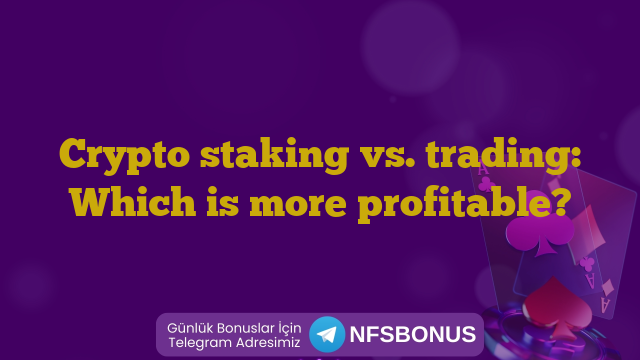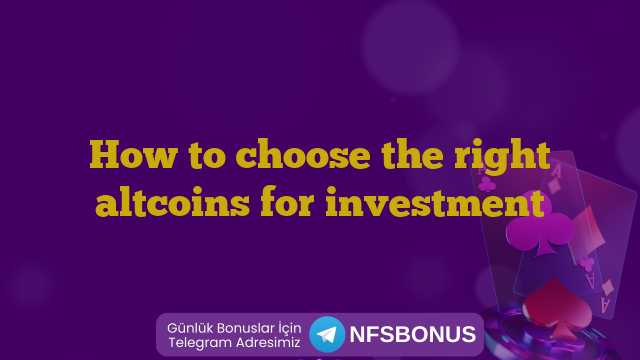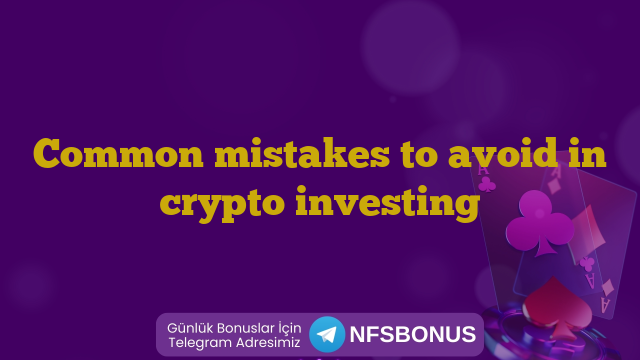Understanding Crypto Staking And Trading Basics
To navigate the world of cryptocurrency, it’s essential to grasp the fundamentals of both staking and trading. Both methods offer unique advantages and drawbacks, contributing to ongoing discussions regarding their profitability. By understanding how crypto staking vs trading functions, investors can make informed decisions tailored to their financial goals.
Staking involves locking up a certain amount of cryptocurrency in a wallet to support the operations of a blockchain network, while simultaneously earning rewards in the form of additional coins. It essentially allows participants to play a role in the network’s security and transaction validation. On the other hand, trading pertains to the buying and selling of cryptocurrencies in the market, leveraging price fluctuations for potential profit. Both approaches require a strategic mindset and awareness of market trends.
- Cryptocurrency Wallets: Essential for safely storing your assets.
- Market Volatility: Understanding price fluctuations can help in maximizing profits.
- Rewards and APY: Knowing the potential returns from staking is crucial.
- Trading Pairs: Be familiar with which cryptocurrencies you can trade against each other.
- Risk Management: Strategies to mitigate losses in both staking and trading.
- Market Analysis: Technical and fundamental analysis techniques can aid trading decisions.
- Regulatory Environment: Awareness of laws impacting crypto can influence your choices.
When considering crypto staking vs trading, it’s vital to recognize that each method caters to different investor profiles. Staking often appeals to those seeking passive income and a long-term engagement with their chosen cryptocurrencies. Conversely, traders are usually more actively involved, seeking quick gains based on market movements and trends. This fundamental distinction often dictates the approach individuals take depending on their risk tolerance and investment strategies.
In summary, understanding the basics of staking and trading is crucial for anyone looking to engage in the cryptocurrency space. By dissecting the intricacies involved in each method, investors can better position themselves to make profitable decisions. Ultimately, the choice between crypto staking vs trading will depend on personal financial goals, market disposition, and risk management capabilities.
Key Differences Between Staking And Trading
When considering the profitability of crypto staking vs trading, it’s essential to recognize the key differences that influence how these methods operate. Each approach to cryptocurrency investment offers unique benefits and challenges, making it crucial to understand what to expect from each. This knowledge can significantly affect your potential returns and investment strategy.
One of the major distinctions lies in the mechanics of each method. While trading focuses on the short-term price volatility of cryptocurrencies, staking promotes long-term investment. Understanding the implications of both approaches is vital as they serve different financial goals and risk appetites. Below are the significant differences to consider:
- Differences To Consider
- Investment Timeframe: Trading requires constant attention, whereas staking is more hands-off.
- Risk Level: Trading carries higher risk due to market fluctuations, while staking generally involves lower risk with predictable returns.
- Profit Mechanism: Trading profits from market timing and price movements, while staking earns rewards for network participation.
- Asset Lock-In: Staking usually requires locking up assets for a longer duration, whereas trading allows for immediate liquidity.
- Market Knowledge: Successful trading demands extensive market analysis, while staking’s requirements are less demanding.
- Potential Returns: Trading can yield high returns quickly, while staking offers steady but often lower returns.
- Emotional Stress: Trading can induce high levels of stress due to the constant need for decision-making, while staking promotes a more relaxed investment style.
Deciding between the two methods is influenced by various factors, making it important to assess your personal circumstances. For example, risk tolerance and investment goals play a pivotal role in this decision-making process. Additionally, market conditions can dictate the potential effectiveness of either strategy, emphasizing the need to stay informed.
Factors Influencing Your Decision
Several elements can sway your choice between staking and trading. Your financial objectives are probably the most significant factor; if you value steady, passive income, staking might suit you better. Conversely, if you’re seeking high returns and can withstand market volatility, trading could be more appealing. Ultimately, understanding your risk tolerance, market environment, and investment horizon is key.
When To Choose Each Method
Choosing the right strategy often comes down to your investment style. For instance, opt for trading during periods of high market volatility when prices fluctuate significantly. On the other hand, if you are in for the long haul and prefer stability, staking is the way to proceed. This choice underscores the importance of aligning your strategy with your financial goals and market conditions.
Pros And Cons Of Crypto Staking Vs Trading
When diving into the world of cryptocurrency, one may wonder about the various investment strategies available. Two of the most discussed methods are crypto staking vs trading. Each approach offers distinct advantages and challenges, making it essential for investors to keenly evaluate their own financial goals and risk tolerance.
In essence, staking involves locking up cryptocurrencies to support network operations, which in return generates rewards over time. On the other hand, trading requires an active approach where investors buy and sell cryptocurrencies based on market fluctuations. Understanding these differences can significantly determine one’s potential success and satisfaction in the crypto space.
Benefits And Drawbacks Of Each.
- Staking: Provides passive income through rewards.
- Trading: Offers high-risk, high-reward potential based on market analysis.
- Staking: Generally considered less hands-on, making it suitable for long-term holders.
- Trading: Requires constant monitoring and quick decision-making abilities.
- Staking: May have lower transaction costs compared to frequent trading fees.
- Trading: Greater chance for significant short-term profits, but also losses.
- Staking: Supports network stability and security, benefitting the broader community.
In the debate of crypto staking vs trading, it’s crucial for investors to assess not only potential rewards but also the level of risk they are willing to take. While staking can provide steady income over time, those looking for immediate gains might lean towards trading. Each individual’s financial circumstances and objectives will ultimately shape their choice in this ever-evolving digital landscape.
How To Start Crypto Staking Or Trading Effectively
When entering the world of cryptocurrency, many new investors often wonder about crypto staking vs trading. Both methods provide opportunities to earn returns, yet they diverge significantly in strategy and risk levels. Understanding the fundamental differences between these approaches is crucial for making informed decisions that align with your financial goals.
For those looking to begin their journey into either crypto staking or trading, it is essential to adopt a strategic mindset. This involves not only acquiring the right knowledge but also applying effective practices that will enhance your potential for profit. Each path offers unique advantages, and your choice will largely depend on your investment style and risk tolerance.
Steps To Begin Your Journey
- Research and choose a reliable cryptocurrency platform.
- Understand the specifics of staking or trading, depending on your focus.
- Create a secure wallet to store your cryptocurrencies.
- Decide on the cryptocurrencies to stake or trade based on market analysis.
- Start with a small investment to gain practical experience.
- Track your performance and adjust your strategies accordingly.
- Stay informed on market trends and news to make educated decisions.
Engaging in crypto staking vs trading involves continuous learning and adaptation. As market dynamics shift, being proactive can significantly enhance your overall experience and profitability. Establishing a clear plan and focusing on long-term goals will help you navigate the complexities of cryptocurrency investments.
Ultimately, the journey into crypto staking or trading should reflect your personal financial goals and risk appetite. Take the time to evaluate your options and make informed decisions to maximize your potential for success.
In conclusion, whether you choose crypto staking or trading, the key is to approach each method with a well-defined strategy. By following the steps outlined and remaining adaptable, you can effectively establish yourself in the world of cryptocurrencies and leverage their potential for profit.
Real-Life Examples Of Successful Staking And Trading
When evaluating the profitability of crypto staking vs trading, real-life examples serve as powerful proof of each method’s efficacy. Numerous investors have achieved significant gains through both avenues, demonstrating that success in the crypto market can be realized through disciplined strategies and informed choices. Understanding these case studies allows prospective investors to learn from others’ achievements and pitfalls.
- Noteworthy Case Studies
- Ethereum 2.0 Staking: Early adopters who staked their ETH have seen substantial returns as the network transitioned to proof of stake.
- Cardano (ADA) Staking: Investors who participated in staking Cardano during its launch phase benefited from its price appreciation.
- Bitcoin Trading: Traders who capitalized on Bitcoin’s volatile price movements within the first half of 2021 realized impressive gains.
- Polkadot (DOT) Staking: Those who staked DOT during its initial offering profited from both staking rewards and price surges.
- Day Trading Litecoin (LTC): Multiple traders profited from day trading by effectively leveraging chart patterns and market trends.
- Binance Coin (BNB) Trading: Investors trading BNB during market dips were able to maximize their returns, highlighting effective trading strategies.
- Passive Income from Tezos (XTZ): Investors who staked Tezos enjoyed consistent rewards while benefiting from the general price increase.
These examples illustrate that both crypto staking vs trading can yield impressive results. However, the experiences of individual investors vary significantly based on their strategies, market timing, and risk management practices. Successful staking often demands patience, as returns accrue over time, while trading requires quick decision-making and an understanding of market dynamics.
Ultimately, the choice between staking and trading is highly subjective and influenced by personal investment goals. While some investors may prefer the simplicity and passive nature of staking, others may find excitement and higher potential returns through trading. By analyzing real-world outcomes, investors can make more informed decisions tailored to their risk tolerance and financial aspirations.
Final Thoughts On Choosing Between Staking And Trading
As we conclude our exploration of crypto staking vs trading, it’s essential to weigh both options carefully. Each approach offers unique opportunities and challenges, making it imperative to understand your personal investment goals and risk tolerance. While trading often garners attention due to its potential for high returns, staking provides a more stable method of generating passive income. The decision ultimately hinges on how involved you want to be in managing your cryptocurrency assets.
Investors should consider the time commitment associated with each method. Trading requires constant monitoring of market trends and price fluctuations, which can be both exhilarating and daunting. On the other hand, staking involves less active engagement, allowing for a more hands-off approach. Therefore, if you prefer a more passive investment strategy, staking may align better with your lifestyle. Conversely, if you enjoy the adrenaline of market movements, trading could be more suitable.
- Determine your investment goals early.
- Understand your risk tolerance before choosing a strategy.
- Research the cryptocurrencies that interest you.
- Consider diversifying your portfolio with both staking and trading options.
- Stay updated on market trends and shifts.
- Evaluate your time commitment realistically.
- Explore communities and resources for support and education.
Ultimately, the choice between crypto staking vs trading boils down to individual preference and experience. It is beneficial to continuously educate yourself on both methods, as the crypto landscape is ever-evolving. Whichever path you choose, ensure that you remain informed and adaptive to navigate this dynamic market successfully.
In summary, there is no one-size-fits-all answer when it comes to choosing between staking and trading. Assess your financial goals, risk appetite, and commitment level to make an informed decision that will enhance your investment journey.
Frequently Asked Questions
What is the primary difference between crypto staking and trading?
The primary difference lies in the approach: crypto staking involves holding and supporting the network's blockchain operations to earn rewards, while trading focuses on buying and selling cryptocurrencies to capitalize on price fluctuations.
Is crypto staking considered a passive income strategy?
Yes, crypto staking is often regarded as a passive income strategy, as it allows users to earn rewards over time without actively managing their investments.
What are the risks associated with trading cryptocurrencies?
Trading cryptocurrencies carries risks such as market volatility, potential losses from sudden price drops, and the need for significant market knowledge to make informed decisions.
Can you lose money through crypto staking?
While the risks are generally lower than trading, there is still a possibility of losing money through crypto staking, especially if the underlying cryptocurrency’s value decreases significantly.
What skills are necessary to start trading cryptocurrencies effectively?
Effective trading requires technical analysis skills, strong market knowledge, and the ability to manage risk and emotions during market fluctuations.
How much can one realistically earn through crypto staking?
Earnings from crypto staking can vary widely depending on the cryptocurrency, the staking rewards offered, and the amount staked, with typical annual returns ranging from 5% to 20%.
What are some successful strategies for crypto trading?
Successful strategies include day trading, swing trading, and employing risk management techniques such as stop-loss orders and portfolio diversification.
Which option is more suitable for beginners: staking or trading?
For beginners, crypto staking may be more suitable as it typically requires less active management and can provide a steady income without requiring deep market expertise.





